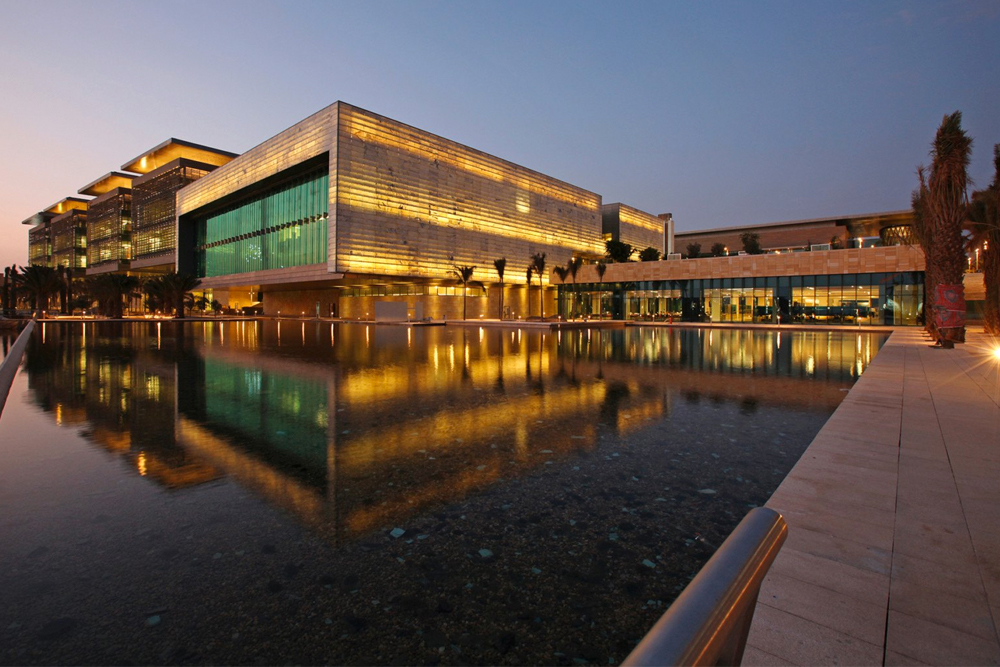
As the world continues to grapple with the current coronavirus pandemic, scientists across the globe are still trying to understand how the virus that spreads COVID-19, known as SARS-CoV-2, works, acts, and evolves. This week, a major breakthrough took place in Saudi Arabia as scientists at the Kingdom’s renowned King Abdullah University of Science and Technology (KAUST) unveiled the most-up-to-date models of the coronavirus, which was mapped using 3D modeling technology and recent data gathered on the virus.
A simple #COVID19 test kit combines virus amplification with a #CRISPR-Cas system for effective SARS-CoV-2 detection. The kit, called iSCAN, uses reagents that can be locally manufactured. #KAUSTdiscovery #humanhealth #bioengineering https://t.co/IEFiFKGac3
— KAUST (@KAUST_News) November 10, 2020
Due to their efforts, the world now has more accurate images of the external and internal structures of SARS-CoV-2, giving us a better look at the proteins making up the virus’ “spikes”, its outer membrane, and the ribonucleic acid (RNA). As the coronavirus has a diameter of around 120 nanometers, making it impossible to observe under a microscope, 3D modeling was necessary to paint a better picture, which will prove crucial in helping KAUST and other organizations across the globe develop COVID-19 treatments.
In an official statement released by the team behind the new visualizations of SARS-CoV-2, Ondrej Strnad, who is a research scientist and author of the latest study, stated that their 3D model “demonstrates the current state-of-the-art structure of SARS-CoV-2 at the atomistic level and reveals details of the virus that were previously impossible to see, like how we think nucleocapsid proteins form a rope-like structure inside it.".
#KAUST researchers generate #3Dmodel which demonstrates the current state-of-the-art structure of SARS-CoV-2 at the atomistic level and reveals details of the virus that were previously impossible to see. #COVID19 #coronavirus #visualcomputing https://t.co/B5hajgg8Vh
— KAUST (@KAUST_News) November 9, 2020
“The approach we used to develop the model could steer biological research into new, promising directions for fighting the spread of COVID-19, as it could help scientists rapidly incorporate newly discovered information into the model and thus provide an up-to-date structure of the virus,” he continued.
Peering under the "hood" of SARS-CoV-2: Microscope and protein data are incorporated into an easy-to-use-and-update tool that can model an organism’s 3D appearance. Read more on #KAUSTdiscovery: https://t.co/B5hajgg8Vh #COVID19 #visualcomputing #computerscience pic.twitter.com/ZHnRZqIU5F
— KAUST (@KAUST_News) November 5, 2020
Over the past year, Saudi Arabia has been working diligently on ways to help curb the spread COVID-19, not only through nation-wide measures but through strategic partnerships as well. Indeed, the Saudi government pledged over $150 million towards GAVI, a Geneva-based public-private health partnership, and the country’s Ministry of Health and the Saudi Food and Drug Authority are taking part in COVAX, a global COVID-19 vaccine research alliance that has the backing and support of the World Health Organization (WHO) and China. In addition, through key partnerships with Chinese research institutes such as Sinovac Biotech that have involved clinical trials in Saudi Arabia, there is now a vaccine awaiting approval by the Saudi Food and Drug Authority.

















